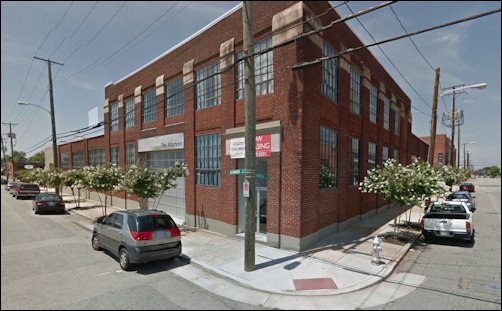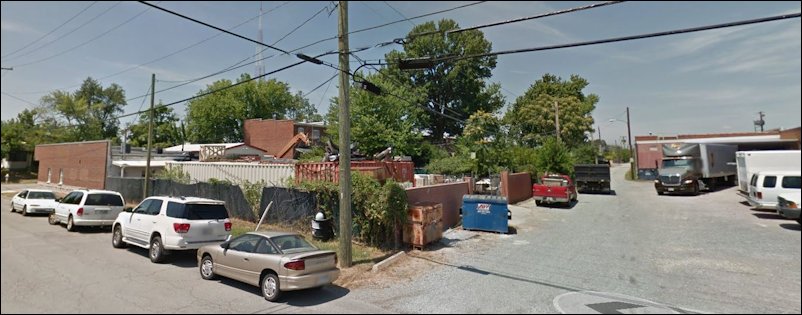by James A. Bacon
The Scott’s Addition area of Richmond, Va., is the last place most people would want to live. It’s a gritty neighborhood of warehouses and light industry comprised mostly of boxy and unadorned brick buildings, grungy gravel parking lots and a few stunted trees. Indeed, it’s the kind of place normally zoned to keep renters and homeowners out. Yet it’s one of the hot, up-and-coming neighborhoods in the City of Richmond. Young people, it appears, like living there.
The neighborhood has a great location within bicycling distance of downtown and Virginia Commonwealth University, not to mention it’s a hop, skip and jump from Interstate 95 and the Powhite Expressway. Property is still relatively cheap. And, oh… anything goes.
Max Musto doesn’t have to go far from his apartment in Scott’s Addition to practice with his band, Dr. Con, a power funk outfit, according to the Times-Dispatch, which profiles the Scott’s Addition comeback today. “We can go all night, you know, because it’s an industrial section,” he says. He chose the neighborhood because it’s cheap and “away from everybody.”
The renaissance of Scott’s Addition, which was named after General Winfield Scott, is fascinating in many ways. One storyline could be that the revitalization sprang out of nowhere. No one at City Hall anticipated the redevelopment that occurred there. It never hit the radar screen of the city’s booster groups. With some assistance from historic rehabilitation tax credits, redevelopment happened all by itself.
The other storyline — the one that I will elaborate upon today — is that the Scott’s Addition renaissance calls into question the notion that it is necessary and desirable to rigidly segregate industrial land uses from residential. The very concept of zoning originated as a way to separate housing from nasty, polluting industries that befouled the air and water nearby. It was a public health and safety issue. But 50 years of ever-tighter environmental regulations have obviated the need for separation except in rare instances. There are no significant public health issues associated with living in Scott’s Addition today.
In fact, the proximity of residential and industrial-warehouse space is a good thing. Not only does Max Musto get to jam with his band but woodworkers, glassblowers and other local artisans can lease space near where they live. People who work in Scott’s Addition — not just in light industrial jobs like rug cleaning, sign printing, auto body repair — can live there, too. Meanwhile, there is an increasing array of non-industrial businesses, including restaurants, craft breweries, coffee houses, and even Moseley Architects, a respected, midsized architectural firm.
Let me repeat for emphasis: It’s a good thing when people have the option to live near where they work. It’s good for the workers, who spend less money on transportation. It’s good for others because it keeps cars off the main roads. It’s good for the employers because employees who live nearby are less likely to encounter transportation-related problems getting to work. It’s good for the environment because burning less gasoline translates into less air pollution. It’s good for the city because revitalization bolsters the tax base.
Every locality should re-think zoning codes that prohibit the intermingling of industrial, commercial and residential uses except in rare instances in which a manufacturing facility poses a manifest risk to the health of neighbors, such as a company that uses toxic chemicals in its industrial processes. My friend Dan Slone goes a step further and advocates the creation of eco-districts in which the waste heat from clean manufacturing processes is recycled to power HVAC for neighboring residents.
What has arisen in Scott’s Addition is unique in the Richmond area and all-too-rare anywhere in the country. It’s an environment where anything goes. No one moves there unless they’re willing to put up with the noise and dust of tractor-trailers and machine shops… and Musto’s rock band. It’s not a place for blue noses. There are two — count ’em, two — gentlemen’s clubs. It strikes me as the kind of place where all manner of wild, creative things can happen.
By formalizing what is evolving on the ground in Scott’s Addition, the City of Richmond could create a national showcase for urban revitalization.




